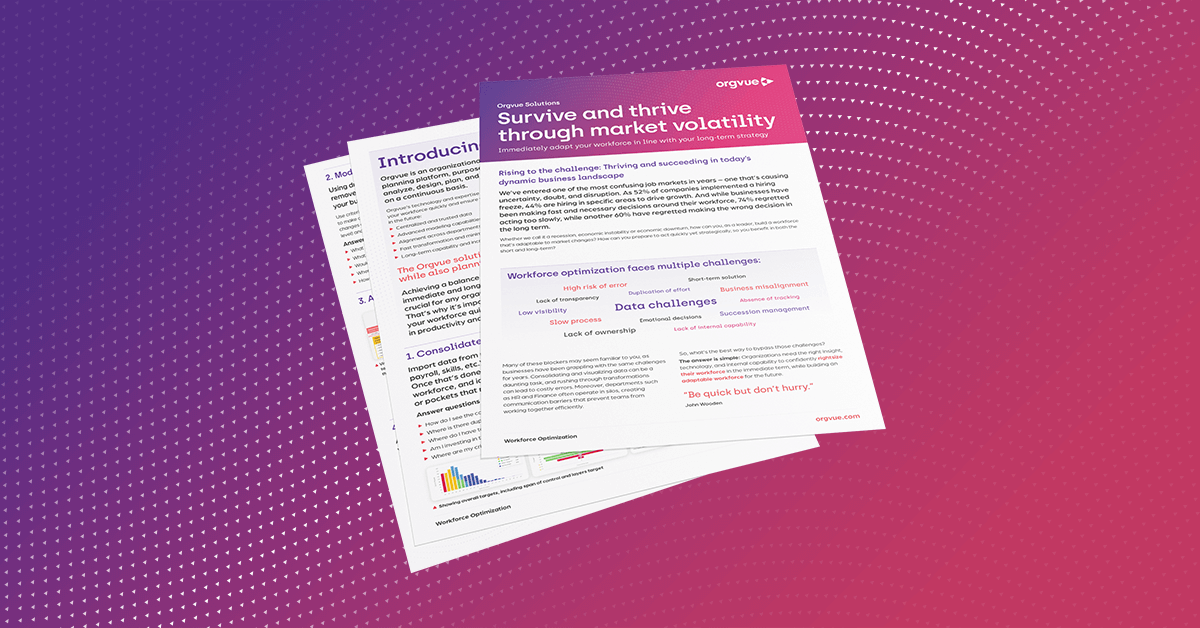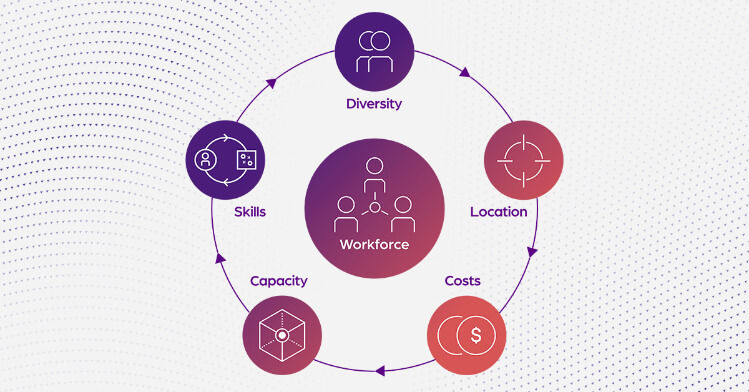How to prepare for a recession
Four strategies to help you prepare for a recession and guide your organization through uncertainty to succeed both in the short and long term.
More resources

Read our latest solution brief to learn how Orgvue can help you to survive and thrive through market volatility.

Apply now for this free two-hour advisory workshop with Orgvue’s expert consultants to quickly show you how to create sustainable productivity through workforce optimization

Orgvue's Chief Executive Officer Oliver Shaw discusses three key behaviors organizations can adopt to help plan for recession and thrive in the future.

Take the organizational design self assessment and in only one minute compare your company’s capability against our industry benchmark and get your free report with hints, tips, and recommended next steps.
